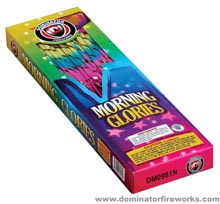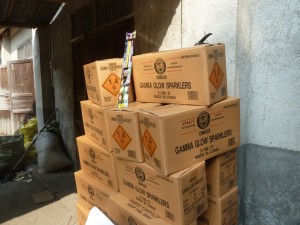 Ever wonder how are sparklers made? Although generalized as fireworks because of their composition and behavior, are not regulated as such in the USA. Sparklers fall into a category called novelties, and are one of very few firework type devices that can be safely used while held in the hand, and shipped through standard mail.
Ever wonder how are sparklers made? Although generalized as fireworks because of their composition and behavior, are not regulated as such in the USA. Sparklers fall into a category called novelties, and are one of very few firework type devices that can be safely used while held in the hand, and shipped through standard mail.
Sparklers have become very popular at weddings, graduations and birthday parties besides a staple item at Fourth of July celebrations. In India, they consume more sparklers than than the entire USA does during a single religious celebration called Diwali. India is second in manufacturing only to China. Here  is a picture of cases of sparkles being produced and prepared for shipment from a factory in China.
is a picture of cases of sparkles being produced and prepared for shipment from a factory in China.
Sparklers are available in various forms starting with their base, or stick. The industry standard is and has been a thin rigid piece of metal wire. Variations are few but include thin bamboo sticks which are viewed by some as safer as the bamboo burns away and your not left with a glowing hot metal wire in your hand. According to the CPSC (Consumer Product Safety Commission) sparklers burn at up to 2,000 degrees fahrenheit!
The thin rigid wires are cut to length and then dipped in a slurry, or composition of powdered metals, oxidizers and binders ranging from cornstarch to iron or titanium which commonly gives the “sparking” action we have come to love. They are then hung on racks where they dry for days sometimes, depending on humidity and weather conditions. Hunan, China is where the majority of the worlds sparkler production takes place and in the spring months of February through May it can rain for many days at a time slowing the process. Next time you light that seemingly simple little sparkler, you’ll know a lot more about how it works and can share some information about how are sparklers made!
